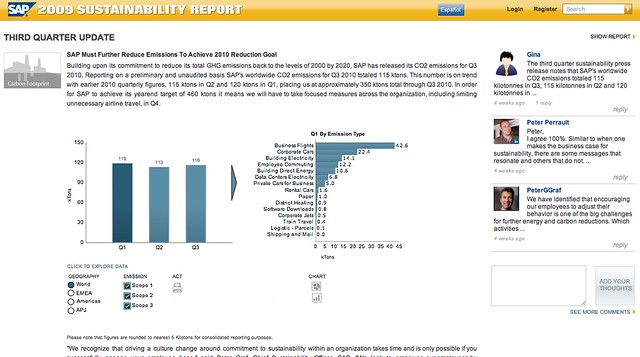
Back in July of this year (2011), the Carbon Disclosure Project (CDP), in conjunction with Verdantix, released a report titled Cloud Computing – The IT Solution for the 21st Century [PDF warning] which erroneously claims Cloud Computing is Green. Shortly after it was released, I wrote a long post outlining exactly where the report was flawed. I also contacted the CDP directly outlining my concerns to them and pointing them to the blog post.
Then, a couple of weeks back, when preparing my slides for my Cloud Computing’s Green Potential talk for the Cepis and Hepis Green IT conference in Athens, I discovered that Verdantix and the CDP had published
a new report [PDF] on the business and environmental benefits of cloud computing in France and the UK
Unfortunately, not only does the new report make the same mistakes as the original one, but it further compounds those errors with an even more fundamental one.
Let me explain.
In the key assumptions section of the report it talks about the metric tons of CO2/kWh in both the UK and French electricity grids (0.000521 tonnes and 0.000088 tonnes respectively). It uses these figures to extrapolate the savings in both France and the UK for companies migrating their applications to cloud computing.
So? You say. Sounds reasonable to me.
Well, the issue is that they didn’t do any work to identify where applications migrated to the cloud would be hosted. The implication being that UK applications migrated to the cloud, will be hosted on UK cloud infrastructure and French IT applications will be migrated to French hosted cloud infrastructure. In fact this would be a highly unusual scenario.
A quick look at where most cloud hosting takes place shows that the vast majority of it is occurring in the US, with quite a lot happening in Singapore with a lesser amount in Europe (and that split between Ireland, Germany, UK, etc. but almost none in France – Ireland is underestimated in the list as it doesn’t include Microsoft which has a significant Cloud hosting facility in Dublin which it is now expanding or Google’s Dublin facility).
Ok, and what about the carbon intensity of electricity generation in these countries? If a cloud application is moved to somewhere with a lower carbon intensity for electricity generation, then there is a possibility of a carbon saving. However, with the vast majority of cloud hosting still being done in the US, that isn’t a likely scenario.
This table of CO2 emissions from electricity generation, by country shows that the US has one of the most carbon intensive electrical grids in the world. France, on the other hand, with its high concentration of nuclear power (78%) has one of the least carbon intensive electricity grids in the world. While the UK grid’s carbon intensiveness at 557kg CO2/mWeh sits just above the world average of 548kg CO2/mWeh.
While it is possible (though not probable) that UK IT applications outsourced to the cloud would be hosted in a country with a lower carbon intensity than the UK, the chances of a French IT application being hosted in a country with a lower carbon intensity than France are virtually nil.
Given this, the assertion by the CDP report that
large businesses in France and the UK can reduce CO2 emissions from their IT estate by 50% compared to a scenario where there was no cloud computing.
seems, at best, extremely improbable.
One problem with coming up with reports like this is the lack of transparency from cloud providers on their locations, their energy and carbon footprints. If all cloud providers reported these metrics, it would be a far simpler matter to decide whether cloud computing is green, or not. Without these data, there is absolutely no way to say whether moving to the cloud increases or decreases CO2 emissions.
If you are wondering why the Carbon Disclosure Project and Verdantix are so bullish in their assertions that Cloud Computing is Green – if you scroll to the bottom of the report, you’ll see this:
This study was supported by AT&T
For more information on AT&T Cloud Solutions go to …
The report was paid for by the Cloud Solutions division of AT&T. Enough said.
Photo credit fotdmike



